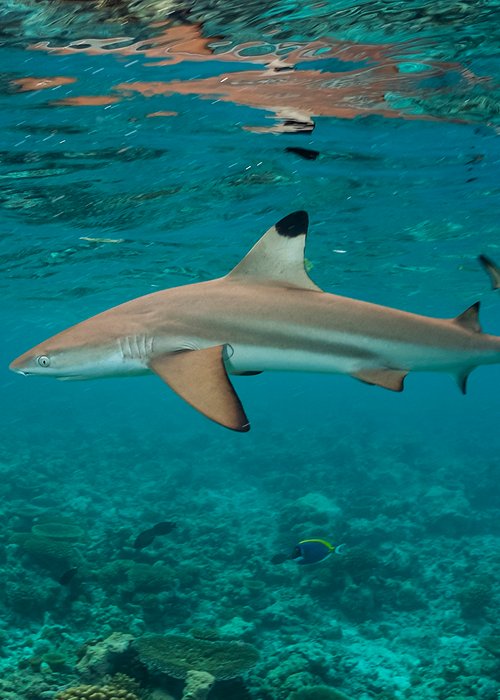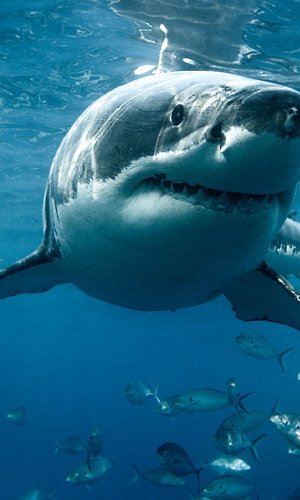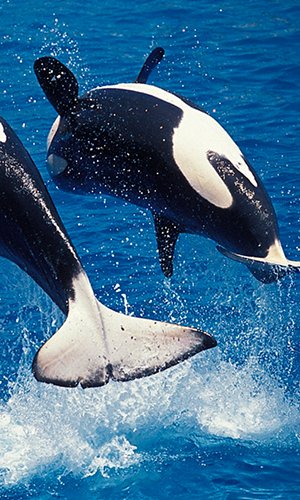Sharks—ancient and fascinating predators—have ruled the oceans for over 400 million years. Their survival has been ensured by a combination of extraordinary adaptations: highly developed senses, sophisticated hunting strategies, and, above all, a unique dentition capable of continuous regeneration. And yet, when faced with an invisible but unstoppable enemy—ocean acidification—even their teeth may start to show signs of weakness. A team of German and international researchers has recently conducted a study that sounds like something out of a science fiction lab: they took the teeth of blacktip reef sharks (Carcharhinus melanopterus) and immersed them for eight weeks in “future” seawater, with a pH of 7.3—the value scientists predict for the year 2300 if CO₂ emissions continue unchecked. The results? The teeth began to corrode, losing their shine, the fine detail of their serrations, and even parts of their roots. The sea is a vast “blue lung”, absorbing around one third of the CO₂ emitted by human activity. But this has a side effect. When CO₂ dissolves in water, it forms carbonic acid, which lowers the ocean’s pH. Over the past two centuries, the average value has dropped from 8.2 to 8.1. That may sound like a slight change, but the pH scale is logarithmic: this means the ocean is now about 30% more acidic than in pre-industrial times. If the trend continues, the level could drop to 7.3 by 2300—with devastating consequences for many marine organisms that build their structures from calcium carbonate or similar compounds. Corals, molluscs and calcareous plankton are among the best-known victims. But now we are discovering that even shark teeth—made from a mineral called fluorapatite, considered more resistant than the hydroxyapatite in human teeth—are not immune. Shark teeth are not just tools for biting: they are evolutionary blades. In the case of the blacktip reef shark, the upper teeth are finely serrated to tear into prey, while the lower ones are more pointed and designed to grip. Unlike mammals, sharks constantly replace their teeth: every week or month, new rows emerge from the gums like a conveyor belt. Their structure is complex: a porous root of osteodentine anchors the tooth, a central pulp filled with living tissue, and an outer crown coated with a hard crystalline layer known as enameloid. It is precisely this combination that makes them sharp and resilient. But, as the experiments have shown, acidification can attack every level. Researchers collected around 600 teeth naturally shed by sharks housed at the Oberhausen aquarium in Germany. After careful selection, 16 teeth were divided into two groups: one immersed in normal pH seawater (8.2), the other in acidified water at pH 7.3. For eight weeks, the teeth were monitored using advanced techniques such as scanning electron microscopy. The results were clear:
- Shape changes: teeth in acidic water showed an increase in circumference—not due to actual growth, but to irregularities and micro-fractures at the edges.
- Root corrosion: the more porous osteodentine zones lost structural integrity, with more extensive holes and cavities than the control samples.
- Crown damage: the hardest layer, the enameloid, began to show visible cracks and corrosion, compromising the tooth’s cutting edge.
- Loss of detail: the fine serrations—vital for slicing into prey—were smoothed out or erased.
In other words, a more acidic future ocean could render shark teeth less sharp, more fragile, and less effective for hunting. For a shark, a worn tooth is not just a cosmetic issue. It’s a matter of survival. Blunted or fragile teeth reduce the animal’s efficiency in capturing and processing prey, forcing it to expend more energy feeding. On a wider scale, this could result in weaker sharks, with lower reproductive success and declining populations. All this in an already dire context: many shark species are under threat from overfishing, habitat destruction and climate change. Weakening their hunting tools means striking at a key crucial element in the marine food chain. Sharks regulate populations of herbivorous fish and mid-level predators, maintaining ecosystem balance. If they disappear or become too scarce, the whole system can collapse—with consequences for fisheries and for humanity. The authors of the study stress that their experiment represents an extreme scenario: the teeth were isolated, lacking the defence mechanisms of a living organism, and the pH of 7.3 corresponds to the worst-case projection for 2300. In nature, sharks possess physiological compensatory abilities: some, for example, can regulate blood pH or reinforce tooth mineralisation. However, we don’t know yet if these strategies will be enough in an ocean that is changing so rapidly. The message remains clear: the effects of acidification spare not even the ocean’s toughest predators. And studying their teeth could offer a valuable window onto how climate change is literally reshaping marine life. The image of a shark with teeth corroded by acidic seas is powerful and unsettling. It’s not just a biological detail: it’s a symbol of a world we risk transforming irreversibly. If even shark dentition—an evolutionary weapon honed over millions of years—can begin to falter, it means that no marine creature is truly safe. This research reminds us that the oceans are not static entities, but delicate systems interconnected with the atmosphere and our everyday actions. Reducing CO₂ emissions is not just a climate issue: it’s a way of protecting the planet’s vital balances—from coral reefs to sharks, and ultimately, ourselves.
Source: https://www.frontiersin.org/journals/marine-science/articles/10.3389/fmars.2025.1597592/full



